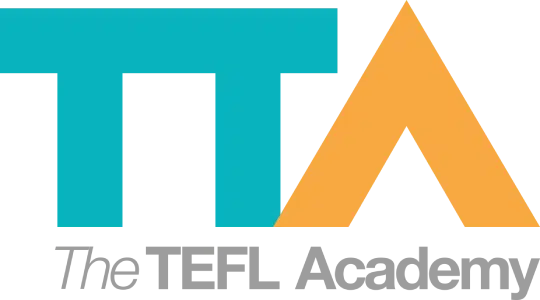What is Chile's English Opens Doors Program (EODP)?
Table of Contents
- Introduction
- What is English Opens Doors?
- Why English Opens Doors?
- Where will I teach?
- Typical teaching week
- Requirements for EODP
- Required documents
- Application procedure
- Your application process
- Pay and benefits
- Is it hard to get into EODP?
- Would you recommend EODP?
When you look at South America on a world map, you’ll notice a country shaped like a giant, skinny chilli pepper stretching down the edge of South America’s coastline. That’s Chile — home to breathtaking landscapes and a growing ESL market.
Chile’s English Opens Doors Program (EODP) – not to be confused with the religious organisation Open Doors! – offers a unique chance to gain valuable teaching experience in Chilean classrooms.
Read more: Teach English in Chile
Marie is a TEFL-certified teacher and TTA alumna who headed to Chile to teach English with the EODP. She had a thing for Spanish and loved the idea of cultural exchange. Who doesn’t?!
Truth be told, she had first set her sights on Mexico, but when that didn’t work out, Chile came along and felt like the right fit. Marie got a real taste of life and learning by teaching in rural Ñuble and living with a local host family.
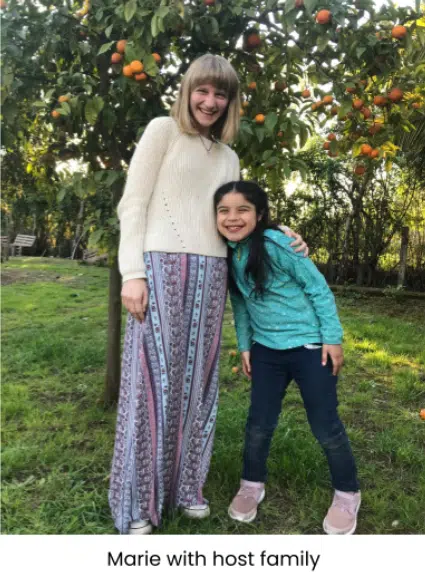
Curious what the programme is all about? Here comes Marie with the inside scoop!
What is the English Opens Doors Program in Chile?
Marie: The English Opens Doors Program (Programa Inglés Abre Puertas) is an initiative administered by the Chilean Ministry of Education with support from the United Nations Development Program-Chile.
It started in 2003 to help Chilean public school students between 5th and 12th grade improve their English.
It provides teacher training, learning materials, language competitions and English immersion camps, and offers scholarships abroad for university students.
The EODP places volunteer English teachers from English-speaking countries in Chilean schools to support the learning of English.
It sounds like a fantastic programme!
It’s unique because it encourages volunteer teachers to focus on speaking and listening skills.
Read more: 11 Best Volunteer Programmes [2025]
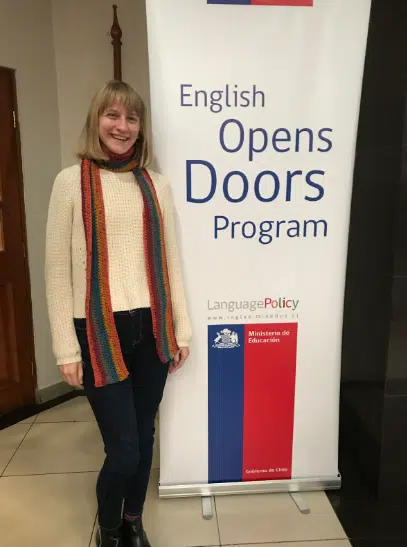
Why did you choose to apply to the Opens Doors Program?
In my early 20s, a life goal of mine was to teach abroad after graduating from college.
Before I found EODP, I had applied for a Fulbright English Teaching Assistant Programme in Mexico. I was a semi-finalist, but ultimately wasn’t selected. This led me to explore other available opportunities for teaching English in a Spanish-speaking country.
Read more: How To Find Volunteer TEFL Jobs
With EODP, I loved the in-country support provided by the host family.
Playing outside with the children and chatting with the grandparents are some of my fondest memories of my time in Chile.
Having returned to the US, I’ve been told that I’ve acquired a slight Chilean accent to my spoken Spanish after my time living with them!
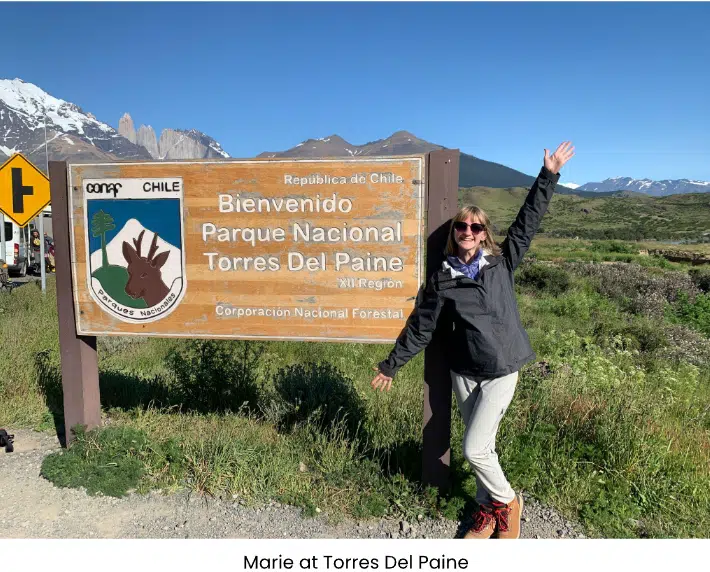
Where will I teach with the English Opens Doors Programme?
About 50% of Chile’s population is concentrated around the Santiago Metropolitan Region, with the rest spread throughout the country.
Teachers are placed throughout Chile, often in small towns or rural areas. Many smaller, more remote communities really benefit from this programme.
We can really get behind this idea of helping remote communities when it comes to education. Did you know? The TEFL Academy partners with UWS to fund the building and maintenance of schools, the provision of lesson materials, and the employment of teachers.
EODP mainly supports public schools, since private schools often hire international English teachers.
During the application and preparation process, there was a participant survey where we indicated our preferred location, but there were no guarantees. You can’t request to be placed in a specific region or city.
I lived in Chillán in the Ñuble Region and worked at a school in the comuna of San Nicolás (known at the time as Liceo Técnico Puente Ñuble), about 20 minutes from where I lived.
My host parents worked at my school, so I usually got a lift with them. I also made use of the micro (a local bus system) when our schedules didn’t align to get to and from school.
I was impressed with the public transportation options available outside of such a small city! I had no problems getting around.
Read more: 5 Perks Of Teaching In A Small Town
What does a typical teaching week look like?
Volunteer teachers must complete at least 24 teaching hours a week, leading classes for students aged 10 to 18 years old. They also spend 11 hours a week preparing for classes and developing extracurricular activities, bringing the total to 35 hours a week.
Read more: Top Tips For Effective Lesson Planning
I taught from fifth grade to the first year of high school. Each class had 30-40 students and a one-hour English period.
My head English teacher split her classes in half, rotating the groups so I worked with each one for 30 minutes at a time. She taught the school’s EFL curriculum, which focused on reading and writing within themed units, while I created speaking and listening lessons that coordinated with each theme.
The whiteboard practice activities I completed in The TEFL Academy’s course were very helpful in designing how I taught my grammar lessons!
No surprises there! 😉
For extracurricular engagement, I helped teach the 6-year-olds during their weekly English lesson. We played lots of Simon Says and Head, Shoulders, Knees, and Toes!
Read more: Brain Breaks For Young Learners
I also joined a dance practice group made up of high school students and teachers. We learnt a traditional dance routine and performed it during a school-wide performance featuring traditional dances from across Chile.
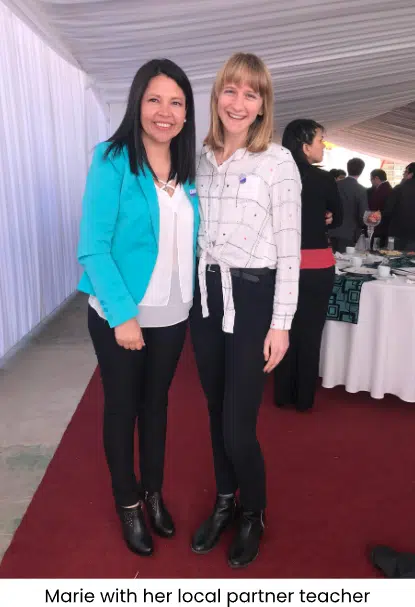
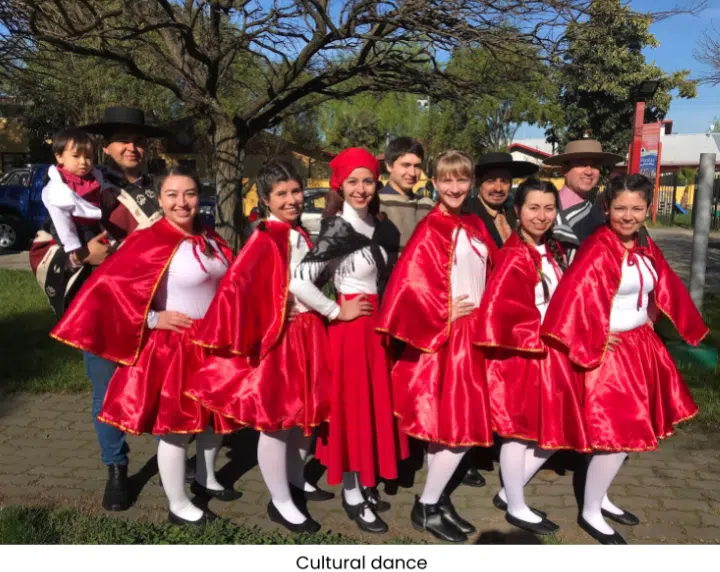
What are the requirements for EODP?
Volunteer teachers aren’t required to be certified teachers and are assigned to work in partnership with local Chilean English teachers.
Read more: Co-Teaching In The EFL Classroom
However, you must be a first-language English speaker.
Unlike other programmes, there are no limitations on which home countries applicants must come from.
The majority of participants came from the US and the UK, but there were participants in my volunteer group from a variety of countries, including China, Cameroon, New Zealand, and South Africa.
You need to be 21 to 25 years old and have a degree.
But you don’t need to speak Spanish.
I had a high level of Spanish proficiency before EODP, but many other participants had little to no proficiency, though EODP provides an excellent opportunity to learn through immersion!
Opens Doors lives up to its name by offering an amazing opportunity that’s truly wide open to many!
So in a nutshell, all you’ll need is:
- To be between the ages of 21-35 years old
- An undergraduate degree
- Native or near-native English proficiency
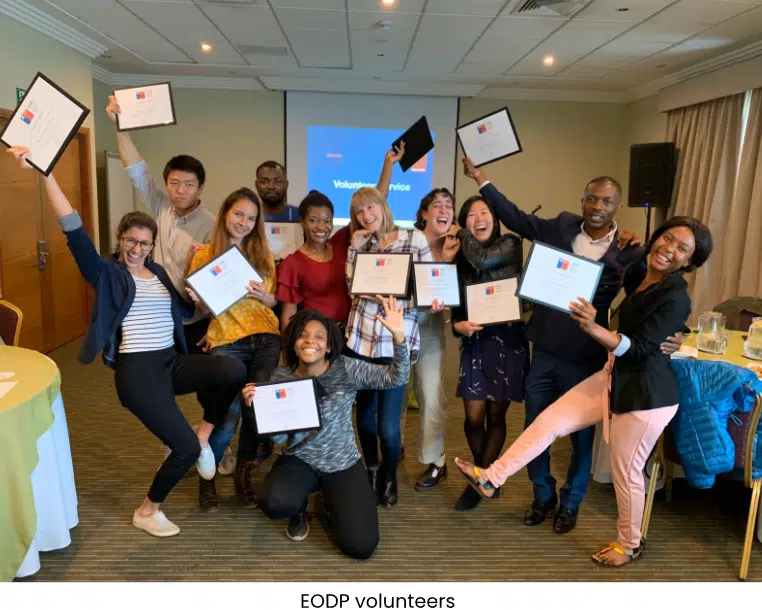
What are the required documents for the English Opens Doors Program?
Admin stuff can always be a bit of a hassle, but here’s what you’ll need to prepare and submit to apply for the English Opens Doors Program:
- Current resume or CV (PDF)
- Electronic copy of your Bachelor’s degree transcript, an unofficial transcript is acceptable (PDF or JPEG)
- Electronic copy of your university diploma (PDF or JPEG)
- Clear copy of your passport information page (PDF or JPEG)
- Two different photos (JPEG) of yourself
- Teaching certifications (if applicable)
- Letter of recommendation (professional or academic reference) using the Applicant Recommendation Form
All volunteers will need to obtain a Temporary Residence Visa (Visa de Residencia Temporaria) through a Chilean consulate after acceptance to the programme and before entering Chile — EODP provides support with this process.
Temporary Residence visa fees are waived for all EODP volunteers through an agreement between the Chilean Ministry of Education and the Ministry of Foreign Affairs.
That’s a really helpful list. Thanks for the heads up about the document format types. That will help save some time for sure!
Now that we know what documents we need to gather, what about the actual application?
What is the application procedure for EODP?
Step 1
Complete the online application form, which includes personal information and an explanation of why you’d like to volunteer with EODP.
Step 2
Submit all required documents (listed above) via e-mail. Provide several available dates to schedule your interview. Have your reference person submit the Applicant Recommendation Form on your behalf via e-mail.
You’ll receive a 10-page mandatory reading document and a cultural adaptation questionnaire to complete in preparation for your interview.
Step 3
Complete a 45-60 minute video call interview in English.
Step 4
EODP notifies applicants via e-mail if they’ve been accepted.
✳️ Application deadlines vary depending on which time of year you are applying for.
I participated in Volunteer Service 4, which meant I applied in April and was in Chile from August to December.
Marie is referring to EODP’s various volunteer placements, which have different start dates.
Here are the Volunteer Service options:
- Volunteer Service 1: March – July (2 weeks of Winter camp included)
- Volunteer Service 2: March – November (1 week of Winter camp & 2 weeks of vacation included)
- Volunteer Service 3: July – November
- Volunteer Service 4: August – December
We have to say, volunteering is such a noble cause. Not everyone will be able to jet off to another country to do it, but that doesn’t mean you have to be left behind.
Read more: 5+ Organisations Where You Can Volunteer To Teach English Online
How was your own application process?
The application process happened very quickly!
I submitted my online application on 22 April. My interview took place on 30 April, and I received notice of acceptance on 3 May.
All requirements and expectations were communicated clearly, making it a very straightforward process.
How much do you get paid as an EODP volunteer teacher? What are the benefits of the programme?
Stipend and housing
The EOPD pays a volunteer stipend of 70,000 CLP ($73) for 30 days of service. That’s 2,333 CLP ($2 ) a day.
Pay is calculated from the first day you start working at your assigned school and paid as a lump sum. It’s deposited into your Chilean bank account (or CuentaRUT). Because I participated for one semester, I was paid 277,627 CLP ($289).
Host families also receive a small stipend from the programme.
💰 The CuentaRUT is a super popular basic bank account from BancoEstado in Chile. Anyone with a valid Chilean ID — whether you’re a local or a foreign resident — can open one, and there’s no minimum income needed. It’s perfect for everyday banking, like getting your salary, paying bills, withdrawing cash, or shopping online.
Back to the EODP! The main benefits of the EODP are:
✅ Free housing and meals. EODP volunteers live with a host family who provide a room and cooked meals.
✅ No chores. You’re expected to socialise with family members, but chores aren’t required—my host family washed my laundry, but I’m not sure that was required!
✅ Dietary restrictions are generally accommodated. Vegetarians and those with allergies are matched with host families willing to accommodate their diet.
✅ Free healthcare. The programme covers health insurance.
✅ Free round-trip transportation from Santiago to your placement.
You’re responsible for your own flights to and from Chile.
It’s important to remember that EODP is a volunteer teaching programme with a small stipend. I highly recommend saving up in advance so that you have enough funds for travel, socialising, shopping and food.
Read more: 8 Simple Money-Saving Hacks All Travelling Teachers Should Know
Support from the National Volunteer Centre (NVC)
A thorough week-long orientation is held in Santiago, where volunteers have a chance to connect.
The NVC provided guidance on teaching speaking and listening through in-class immersion, as well as helpful lessons on Chilean colloquialisms (informal local expressions).
Volunteers also get to meet national coordinators who are available via email throughout placements.
A one-day orientation is held in your placement region.
Since you’ll be working alongside a local EFL teacher, your school’s English department will support you throughout your teaching journey.
The entire programme is a cultural exchange opportunity! That means 95% of your time will be spent surrounded only by locals, giving you limitless opportunities to learn about Chilean culture and customs.
The vast majority of people in Chile have not travelled internationally, so taking part in cultural exchange and learning from one another is a very special moment.
Is it hard to get into EODP?
In my experience, EODP accepts a wider range of applicants than other programmes.
A high priority during the selection process is placed on your ability to acclimate to a new culture. Highlight any experiences you’ve had living abroad or with people from different cultural backgrounds to support your application.
TEFL qualification holders are stronger applicants as they’ll be better prepared to teach.
Volunteers who complete one semester are sometimes given an offer to extend their programme and add a second semester.
Read more: Tips To Write A Sensational CV For Getting Hired To Teach English Abroad

Would you recommend the English Opens Doors Program?
I loved my experience of living in Chile, which absolutely would not have gone as smoothly without the support of the EODP.
I highly recommend this programme to anyone who is interested in embracing a new adventure.
You’ll get to experience the easy-going nature of wonderful people in a far-southern country, set against the stunning backdrop of the Andes mountains.
Chile is a striking TEFL destination where you can work on your teaching skills (and Spanish) while enjoying spectacular views of the Andes from your free accommodation in the company of a welcoming host family.
So if you’re looking for a meaningful but budget-friendly way to experience an exciting new culture, the English Opens Doors Programme may be the opportunity you’ve been looking for.
Table of Contents
- Introduction
- What is English Opens Doors?
- Why English Opens Doors?
- Where will I teach?
- Typical teaching week
- Requirements for EODP
- Required documents
- Application procedure
- Your application process
- Pay and benefits
- Is it hard to get into EODP?
- Would you recommend EODP?
When you look at South America on a world map, you’ll notice a country shaped like a giant, skinny chilli pepper stretching down the edge of South America’s coastline. That’s Chile — home to breathtaking landscapes and a growing ESL market.
Chile’s English Opens Doors Program (EODP) – not to be confused with the religious organisation Open Doors! – offers a unique chance to gain valuable teaching experience in Chilean classrooms.
Read more: Teach English in Chile
Marie is a TEFL-certified teacher and TTA alumna who headed to Chile to teach English with the EODP. She had a thing for Spanish and loved the idea of cultural exchange. Who doesn’t?!
Truth be told, she had first set her sights on Mexico, but when that didn’t work out, Chile came along and felt like the right fit. Marie got a real taste of life and learning by teaching in rural Ñuble and living with a local host family.

Curious what the programme is all about? Here comes Marie with the inside scoop!
What is the English Opens Doors Program in Chile?
Marie: The English Opens Doors Program (Programa Inglés Abre Puertas) is an initiative administered by the Chilean Ministry of Education with support from the United Nations Development Program-Chile.
It started in 2003 to help Chilean public school students between 5th and 12th grade improve their English.
It provides teacher training, learning materials, language competitions and English immersion camps, and offers scholarships abroad for university students.
The EODP places volunteer English teachers from English-speaking countries in Chilean schools to support the learning of English.
It sounds like a fantastic programme!
It’s unique because it encourages volunteer teachers to focus on speaking and listening skills.
Read more: 11 Best Volunteer Programmes [2025]

Why did you choose to apply to the Opens Doors Program?
In my early 20s, a life goal of mine was to teach abroad after graduating from college.
Before I found EODP, I had applied for a Fulbright English Teaching Assistant Programme in Mexico. I was a semi-finalist, but ultimately wasn’t selected. This led me to explore other available opportunities for teaching English in a Spanish-speaking country.
Read more: How To Find Volunteer TEFL Jobs
With EODP, I loved the in-country support provided by the host family.
Playing outside with the children and chatting with the grandparents are some of my fondest memories of my time in Chile.
Having returned to the US, I’ve been told that I’ve acquired a slight Chilean accent to my spoken Spanish after my time living with them!

Where will I teach with the English Opens Doors Programme?
About 50% of Chile’s population is concentrated around the Santiago Metropolitan Region, with the rest spread throughout the country.
Teachers are placed throughout Chile, often in small towns or rural areas. Many smaller, more remote communities really benefit from this programme.
We can really get behind this idea of helping remote communities when it comes to education. Did you know? The TEFL Academy partners with UWS to fund the building and maintenance of schools, the provision of lesson materials, and the employment of teachers.
EODP mainly supports public schools, since private schools often hire international English teachers.
During the application and preparation process, there was a participant survey where we indicated our preferred location, but there were no guarantees. You can’t request to be placed in a specific region or city.
I lived in Chillán in the Ñuble Region and worked at a school in the comuna of San Nicolás (known at the time as Liceo Técnico Puente Ñuble), about 20 minutes from where I lived.
My host parents worked at my school, so I usually got a lift with them. I also made use of the micro (a local bus system) when our schedules didn’t align to get to and from school.
I was impressed with the public transportation options available outside of such a small city! I had no problems getting around.
Read more: 5 Perks Of Teaching In A Small Town
What does a typical teaching week look like?
Volunteer teachers must complete at least 24 teaching hours a week, leading classes for students aged 10 to 18 years old. They also spend 11 hours a week preparing for classes and developing extracurricular activities, bringing the total to 35 hours a week.
Read more: Top Tips For Effective Lesson Planning
I taught from fifth grade to the first year of high school. Each class had 30-40 students and a one-hour English period.
My head English teacher split her classes in half, rotating the groups so I worked with each one for 30 minutes at a time. She taught the school’s EFL curriculum, which focused on reading and writing within themed units, while I created speaking and listening lessons that coordinated with each theme.
The whiteboard practice activities I completed in The TEFL Academy’s course were very helpful in designing how I taught my grammar lessons!
No surprises there! 😉
For extracurricular engagement, I helped teach the 6-year-olds during their weekly English lesson. We played lots of Simon Says and Head, Shoulders, Knees, and Toes!
Read more: Brain Breaks For Young Learners
I also joined a dance practice group made up of high school students and teachers. We learnt a traditional dance routine and performed it during a school-wide performance featuring traditional dances from across Chile.


What are the requirements for EODP?
Volunteer teachers aren’t required to be certified teachers and are assigned to work in partnership with local Chilean English teachers.
Read more: Co-Teaching In The EFL Classroom
However, you must be a first-language English speaker.
Unlike other programmes, there are no limitations on which home countries applicants must come from.
The majority of participants came from the US and the UK, but there were participants in my volunteer group from a variety of countries, including China, Cameroon, New Zealand, and South Africa.
You need to be 21 to 25 years old and have a degree.
But you don’t need to speak Spanish.
I had a high level of Spanish proficiency before EODP, but many other participants had little to no proficiency, though EODP provides an excellent opportunity to learn through immersion!
Opens Doors lives up to its name by offering an amazing opportunity that’s truly wide open to many!
So in a nutshell, all you’ll need is:
- To be between the ages of 21-35 years old
- An undergraduate degree
- Native or near-native English proficiency

What are the required documents for the English Opens Doors Program?
Admin stuff can always be a bit of a hassle, but here’s what you’ll need to prepare and submit to apply for the English Opens Doors Program:
- Current resume or CV (PDF)
- Electronic copy of your Bachelor’s degree transcript, an unofficial transcript is acceptable (PDF or JPEG)
- Electronic copy of your university diploma (PDF or JPEG)
- Clear copy of your passport information page (PDF or JPEG)
- Two different photos (JPEG) of yourself
- Teaching certifications (if applicable)
- Letter of recommendation (professional or academic reference) using the Applicant Recommendation Form
All volunteers will need to obtain a Temporary Residence Visa (Visa de Residencia Temporaria) through a Chilean consulate after acceptance to the programme and before entering Chile — EODP provides support with this process.
Temporary Residence visa fees are waived for all EODP volunteers through an agreement between the Chilean Ministry of Education and the Ministry of Foreign Affairs.
That’s a really helpful list. Thanks for the heads up about the document format types. That will help save some time for sure!
Now that we know what documents we need to gather, what about the actual application?
What is the application procedure for EODP?
Step 1
Complete the online application form, which includes personal information and an explanation of why you’d like to volunteer with EODP.
Step 2
Submit all required documents (listed above) via e-mail. Provide several available dates to schedule your interview. Have your reference person submit the Applicant Recommendation Form on your behalf via e-mail.
You’ll receive a 10-page mandatory reading document and a cultural adaptation questionnaire to complete in preparation for your interview.
Step 3
Complete a 45-60 minute video call interview in English.
Step 4
EODP notifies applicants via e-mail if they’ve been accepted.
✳️ Application deadlines vary depending on which time of year you are applying for.
I participated in Volunteer Service 4, which meant I applied in April and was in Chile from August to December.
Marie is referring to EODP’s various volunteer placements, which have different start dates.
Here are the Volunteer Service options:
- Volunteer Service 1: March – July (2 weeks of Winter camp included)
- Volunteer Service 2: March – November (1 week of Winter camp & 2 weeks of vacation included)
- Volunteer Service 3: July – November
- Volunteer Service 4: August – December
We have to say, volunteering is such a noble cause. Not everyone will be able to jet off to another country to do it, but that doesn’t mean you have to be left behind.
Read more: 5+ Organisations Where You Can Volunteer To Teach English Online
How was your own application process?
The application process happened very quickly!
I submitted my online application on 22 April. My interview took place on 30 April, and I received notice of acceptance on 3 May.
All requirements and expectations were communicated clearly, making it a very straightforward process.
How much do you get paid as an EODP volunteer teacher? What are the benefits of the programme?
Stipend and housing
The EOPD pays a volunteer stipend of 70,000 CLP ($73) for 30 days of service. That’s 2,333 CLP ($2 ) a day.
Pay is calculated from the first day you start working at your assigned school and paid as a lump sum. It’s deposited into your Chilean bank account (or CuentaRUT). Because I participated for one semester, I was paid 277,627 CLP ($289).
Host families also receive a small stipend from the programme.
💰 The CuentaRUT is a super popular basic bank account from BancoEstado in Chile. Anyone with a valid Chilean ID — whether you’re a local or a foreign resident — can open one, and there’s no minimum income needed. It’s perfect for everyday banking, like getting your salary, paying bills, withdrawing cash, or shopping online.
Back to the EODP! The main benefits of the EODP are:
✅ Free housing and meals. EODP volunteers live with a host family who provide a room and cooked meals.
✅ No chores. You’re expected to socialise with family members, but chores aren’t required—my host family washed my laundry, but I’m not sure that was required!
✅ Dietary restrictions are generally accommodated. Vegetarians and those with allergies are matched with host families willing to accommodate their diet.
✅ Free healthcare. The programme covers health insurance.
✅ Free round-trip transportation from Santiago to your placement.
You’re responsible for your own flights to and from Chile.
It’s important to remember that EODP is a volunteer teaching programme with a small stipend. I highly recommend saving up in advance so that you have enough funds for travel, socialising, shopping and food.
Read more: 8 Simple Money-Saving Hacks All Travelling Teachers Should Know
Support from the National Volunteer Centre (NVC)
A thorough week-long orientation is held in Santiago, where volunteers have a chance to connect.
The NVC provided guidance on teaching speaking and listening through in-class immersion, as well as helpful lessons on Chilean colloquialisms (informal local expressions).
Volunteers also get to meet national coordinators who are available via email throughout placements.
A one-day orientation is held in your placement region.
Since you’ll be working alongside a local EFL teacher, your school’s English department will support you throughout your teaching journey.
The entire programme is a cultural exchange opportunity! That means 95% of your time will be spent surrounded only by locals, giving you limitless opportunities to learn about Chilean culture and customs.
The vast majority of people in Chile have not travelled internationally, so taking part in cultural exchange and learning from one another is a very special moment.
Is it hard to get into EODP?
In my experience, EODP accepts a wider range of applicants than other programmes.
A high priority during the selection process is placed on your ability to acclimate to a new culture. Highlight any experiences you’ve had living abroad or with people from different cultural backgrounds to support your application.
TEFL qualification holders are stronger applicants as they’ll be better prepared to teach.
Volunteers who complete one semester are sometimes given an offer to extend their programme and add a second semester.
Read more: Tips To Write A Sensational CV For Getting Hired To Teach English Abroad

Would you recommend the English Opens Doors Program?
I loved my experience of living in Chile, which absolutely would not have gone as smoothly without the support of the EODP.
I highly recommend this programme to anyone who is interested in embracing a new adventure.
You’ll get to experience the easy-going nature of wonderful people in a far-southern country, set against the stunning backdrop of the Andes mountains.
Chile is a striking TEFL destination where you can work on your teaching skills (and Spanish) while enjoying spectacular views of the Andes from your free accommodation in the company of a welcoming host family.
So if you’re looking for a meaningful but budget-friendly way to experience an exciting new culture, the English Opens Doors Programme may be the opportunity you’ve been looking for.
 United States
US
United States
US







